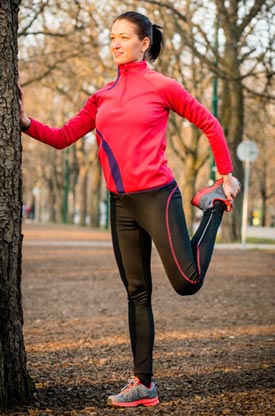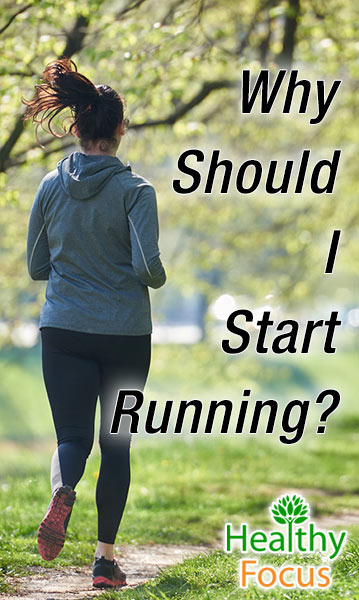Last Updated on September 21, 2016 by Marc Seward
How to get going and what worked for me
About 8 years ago, I finally decided to get fit after many years of inactivity and fairly steady weight gain. I was in my mid 30s and as a first step I bought a bicycle and started to ride the 40 kilometers (25 miles) round trip to work and back. Cycling was not especially rigorous exercise and within a month I had completed a 200 kilometer (124 miles) ride for charity.
I was feeling a little fitter but I did not notice much weight loss so decided to give running a go. I had jogged a fair bit in my younger days and did not feel especially daunted by the idea of starting up again. I threw on my generic pair of tennis shoes and headed off up for a jog on my country road. I got no further than 400 meters before I pulled up lame. That’s a bit of an understatement to be honest. I was in agony, the muscles at the bottom of my back were in spasms and my calves were burning up …… and I had not even completed half a kilometer. How was that possible; surely I was not that unfit? I literally hobbled home and determined not to be beaten went straight online for advice.
- I had made plenty of beginner mistakes.
My running shoes were not adequate; in fact they were not running shoes at all. My warm up consisted of a 50 meter walk to the road before I started running. I had no plan at all; I simply decided to run the 4 kilometer loop back to my house.
Why should I start running?
The advantages of running
There are many very good reasons why you should take up running as soon as possible.
- Running helps you to become noticeably fitter very quickly and will boost your cardiovascular fitness.
- Running strengthens your bones and protects you against osteoporosis.
- Running is an extremely vigorous activity and burns a lot of calories; it can definitely help you to lose weight.
- Running uses many muscle groups and tones your entire body.
- Running relieves stress.
- Running is cheap and convenient.
Advice and tips for Beginners
Begin with interval Training
When you start running, it is important to start off slowly and build up your fitness levels with interval training where you alternate running and walking gradually building up the running intervals. If you try to do too much, too soon you are likely to fail and to become dispirited. There are a number of interval programs for beginners to follow.
Follow a Beginner’s Running Plan
Following my initial failure, I did a little research and I came across a program that looked very manageable and came with some glowing testimonials. The couch to 5k program (link) involves:
- 30 minutes or so of running 3 days a week building up gradually from walking and running intervals to a full 5k run at the end of the 9 weeks.
- There are couch to 5k playlists and podcasts available online that tell you when to run and when to walk.
There are a number of running programs for beginners around but this is the one that worked for me. It did exactly what was advertised. By following the plan exactly, I was able to comfortably run 5 kilometers at the end of the 9 week program. There are many variations of this running plan online but they all have the same thing in common; start slowly and build up your endurance. Within a few months you will proudly be able to call yourself a runner.
Buy good shoes
One of the many advantages of running is that you don’t need a great deal of equipment to get started. The most important investment you can make is to buy a good pair of running shoes. Good running shoes are vitally important. The enormous variety of running shoes on the market these days is a bit daunting but specialist running stores will help you to find the best shoe for your running goals. Some stores will recommend the best shoe for you based on an analysis of your running style. A good pair of shoes should last for between 300 and 500 miles before they need to be replaced.
Other Equipment
Aside from running shoes, no other equipment is strictly necessary. You might like to purchase a heart rate monitor and a digital sport watch to monitor your progress. I enjoy listening to audiobooks when I’m running and never set off without my MP3 player. Women should buy a quality fitted sports bra.
Warm Up Well
A good warm up routine is very important before you set off on your run. If you don’t stretch and warm up, you not only risk muscle injuries but you will find the act of running a great deal harder. After stretching, I recommend a brisk five-minute warmup walk before you start running.

How fast should I go?
Don’t worry too much about your speed when you start running. Find a pace that you can maintain comfortably. As your endurance levels build and your cardio improves then you can start to set time goals. Experts recommend using the ‘talk test’ when running; if you are running at a good pace, you should be able to hold a conversation as you are running.
How to Stay motivated
I found it easy to stay motivated at the beginning. I was following the couch to 5k plan and reading people’s daily experiences at their facebook group page. I also started reading running blogs and developed a fascination for endurance running videos on youtube. If you are finding your run tough going, imagine running the marathon des sables or jogging through Death Valley at the height of summer. I found those videos inspirational and they drive me along when I need it.
I prefer to run alone but running with a friend or a family member helps motivate a lot of people. Music can help you to find a running rhythm but be careful that you don’t get over excited with high tempo beats, especially at the beginning. Keeping a running log will keep you on your game and easily illustrate your improvements. If you are running to lose weight, then this can be a motivation in itself. Don’t be disheartened if you don’t see immediate results, it was about 2 months until I started to see real weight loss and I eventually managed to drop 12 kilos inside the first year.
What Pain should I expect to begin with?
If you are new to running, a certain amount of soreness, especially in the legs, is inevitable to begin with. As you build up your running routine and your muscles get used to the new movement, the soreness will quickly subside. The most common running related injury is shin splints and they are often caused by over training or poorly fitting running shoes.
Stitches
As a beginner runner, you are likely to experience side stitches from time to time. Stitches are a common occurrence for runners but try not to let them deter you. If you experience a stitch, you can slow down your running until the pain subsides. You can also try exhaling harder and longer than usual to get rid of the stitch. If you suffer from stitches regularly, it might be related to your diet. Try to avoid eating solid food less than an hour from your run and make sure that you are well hydrated.
Should I run on a treadmill or outdoors?
It is really up to you whether you run outdoors or on a treadmill. I personally prefer to be out on the country roads under the stars but both have their advantages. Running on hard roads puts more stress on your legs than the more cushioned treadmill machines and of course, the weather might force you indoors. Ultimately the important thing is that you are running, whether you choose to do it indoors or outdoors.
Cool down and stretch properly.
It is very important to cool down after running. Cool down by walking until your pulse rate returns to nearly normal. After cooling down, it is good practice to take the time to stretch well.
Good Luck
I hope that some of our readers will choose to take up running. Remember to stick with it even if you are finding it very difficult at first. If somebody had told me 8 years ago that I would become an active runner and would actually enjoy the activity, I would have told them that they were crazy. When it comes to running, the juice is certainly worth the squeeze.


Leave a Reply
You must be logged in to post a comment.